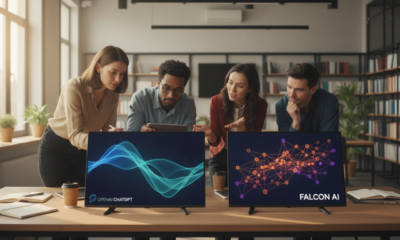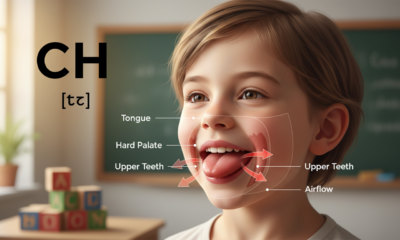

AI-modellen
GPT-4 Models: Hoe Kunstmatige Intelligentie 2025 Transformeert
GPT-4-modellen in 2025: Mogelijkheden, architecturen en waarom ze ertoe doen
GPT-4 vertegenwoordigt een cruciaal moment in toegepaste AI, waarbij transformer-schaal pretraining wordt gecombineerd met doelgerichte redeneer- toevoegingen die de output meer gegrond en nuttig maken. In 2025 omvat de familie GPT-4 Turbo voor interacties met lage latentie, GPT-4o voor native multimodaliteit, en opkomende redeneerspecialistische varianten zoals o3/o4-mini. Ondernemingen waarderen deze modellen vanwege lange-contextanalyse, multimodale inzichten en toolintegratie die databases, vectorzoekopdrachten en RPA coördineert. Het cumulatieve effect is een betrouwbare, algemeen bruikbare assistent die een contract kan opstellen, redeneren over een spreadsheet en een rapport van 300 pagina’s kan samenvatten zonder de draad kwijt te raken.
Twee technische assen definiëren de sprong. Ten eerste blijft onbegeleide schaalvergroting het interne “wereldmodel” verbeteren. Ten tweede introduceert redeneringstraining gestructureerde denkstappen die de prestaties op wiskunde-, codeer- en planningsopdrachten verhogen. Leiders bij OpenAI, Google DeepMind, Anthropic en Meta AI stimuleren ook multimodale fusie zodat tekst, afbeeldingen, audio en video één interface voeden. Het resultaat is niet alleen betere chat; het is software die een grafiek kan inspecteren, een verzoek van een gebruiker kan horen en een correct, geciteerd antwoord kan geven.
Inkoopteams vergelijken opties met een scherp oog voor ROI. Prijs en latentie zijn belangrijk, maar ook observeerbaarheid, bestuur en implementatieflexibiliteit op Microsoft Azure AI, Amazon Web Services AI of on-prem versnellers aangedreven door NVIDIA AI. Voor een gedetailleerde kijk op prijsstrategieverschuivingen verwijzen veel teams naar analyses zoals hoe prijzen evolueren voor GPT‑4-implementaties en functieoverzichten zoals de 128K-contextupgrades in GPT‑4 Turbo. Deze keuzes hebben effect op teamworkflows, budgetcycli en de haalbaarheid van lange-contextpijplijnen.
Wat verandert op architectuurniveau
Drie praktische verschuivingen springen eruit. Mixture-of-experts routing verlaagt de rekentijd per token terwijl de kwaliteit behouden blijft. Retrieval-augmented generation stabiliseert antwoorden met citaten. En native multimodaliteit vermindert lijmcode, waardoor één model een vergadering kan transcriberen, slides kan lezen en taken voor de volgende stap kan genereren. Leveranciers zoals Cohere en Hugging Face beheren open tooling die evaluatie en implementatie over stacks vereenvoudigt, terwijl IBM Watson en clouddiensten governance-pakketten voor gereguleerde sectoren uitbreiden.
- 🔍 Lange-context: Samenvat hele documentrepositories zonder chunk-verlies.
- 🧠 Redeneerverbeteringen: Beter in wiskunde, code en keten-van-logica prompts.
- 🖼️ Multimodaal: Leest native grafieken, diagrammen en slides.
- ⚙️ Toolgebruik: Roept API’s, SQL en RPA-stromen aan binnen guardrails.
- 🛡️ Veiligheid: Sterkere weigering en red-team versterking voor naleving.
| Modelvariant | Sterktes | Context | Beste toepassing | Notities |
|---|---|---|---|---|
| GPT-4 Turbo ✅ | Lage latentie ⚡ | Tot 128K 📚 | Chat, support, samenvattingen | 128K voordelen 📈 |
| GPT-4o 🎥 | Native multimodaal 🖼️ | Lange multimodale threads | Docs + afbeeldingen + spraakopdrachten | Uitstekend voor designreviews ✍️ |
| GPT-4.5 🧩 | Verbeterde redenering 🧠 | Grote context | Complexe analyse | 2025 upgrades 🚀 |
| o3/o4-mini 🧪 | Kostenefficiënte logica 💡 | Middelgrote context | Wiskunde en planning | Redeneerspecialist 🔢 |
Voor leiders die GPT-4 implementeren is het voordeel op korte termijn eenvoudig: hogere kwaliteit antwoorden per dollar. Een goede basislijn vandaag voorkomt dure herschrijvingen morgen, vooral nu teams modelinzichten en implementatiepatronen in 2025 verkennen. De volgende sectie zet die mogelijkheden om in meetbare bedrijfsresultaten.

Transformatie van ondernemingen met GPT-4: Van callcenters tot copiloten
Organisaties in financiën, gezondheidszorg en logistiek zetten GPT-4 copiloten in bij servicedesks, salesoperaties en kennisbeheer. Denk aan Helios Logistics, een fictieve maar representatieve vervoerder in Noord-Amerika. Door GPT-4 te combineren met ophalen uit verzendrecords en IoT-dashboards op Microsoft Azure AI, verlaagde Helios de gemiddelde afhandeltijd met 27% en daalden escalaties met 18%, terwijl strikte rolgebaseerde toegangscontrole behouden bleef. Dit patroon herhaalt zich in sectoren die Amazon Web Services AI gebruiken voor vectordatabases en inference versneld door NVIDIA AI.
Teams vergelijken vaak OpenAI-modellen met alternatieven van Anthropic en Google DeepMind om kosten, latentie en veiligheid te balanceren. Een praktisch speelboek bestaat uit het bouwen van een dunne orkestratielaag die modellen kan wisselen, dezelfde evaluatiesuite toepassen en drift in echte verkeersstromen monitoren. Voor een beknopt overzicht van afwegingen verwijzen beslissers naar analyses zoals vergelijking GPT‑4 met Claude en Llama en OpenAI vs Anthropic in bedrijfsgebruik. Wanneer kosten centraal staan, is het handig productiviteits-ROI-scenario’s te bestuderen en langetermijnhostingopties, inclusief nieuwe datacenteruitbreidingen zoals regionale infrastructuurinvesteringen.
Bedrijfsmodel: waar de waarde ligt
Waarde concentreert zich rond vier workflows: agent-ondersteuning, documentautomatisering, data Q&A, en codeversnelling. Elk kan worden ingezet met gelaagde toegang, auditlogging en modelagnostische routing. Bestuurscomponenten van IBM Watson en beleidskaders op Azure versterken naleving, terwijl ecosystemen van Hugging Face en Cohere experimenten met open en gesloten modellen naast elkaar vereenvoudigen.
- 📞 Agent assist: Live suggesties, toonchecks, nalevingsindicaties.
- 📄 Documentautomatisering: Claims, contracten en factuurstromen.
- 📊 Data Q&A: Natuurlijke taal over warehouse-metrics.
- 💻 Code copilot: Basiscode, tests en herstelplannen.
- 🔒 Guardrails: PII-maskering, rolbewuste zoekopdrachten en audit trails.
| Use case | KPI-impact | Implementatie | Stackpartners | Signaal |
|---|---|---|---|---|
| Agent assist 🤝 | -20–35% AHT ⏱️ | Azure + API | OpenAI, Anthropic | Kostenbeheersing 💵 |
| Docs automatisering 🗂️ | -40% handmatige inspanning 🧩 | AWS + RAG | OpenAI, Cohere | Patroonhandleiding 📘 |
| Data Q&A 📈 | +25% analistdoorvoer 🚀 | Hybride cloud | Hugging Face, IBM Watson | Faalwijzen 🧭 |
| Code copilot 🧑💻 | -30% cyclustijd ⛳ | VPC + Git | OpenAI, Google DeepMind | Experimentatie 🔬 |
Het patroon is consistent: selecteer het juiste model per taak, handhaaf governance aan de rand, en meet wekelijkse verbeteringen. De volgende sectie verkent hoe dezelfde stack creatieve productie hervormt.
Creatieve industrieën heruitgevonden: inhoud, design en multimodaal verhalen vertellen met GPT-4
Studio’s, uitgevers en ontwerpteams combineren GPT-4 met beeld-, audio- en videotools om creatieve briefs in dagen in voltooide assets te veranderen, niet weken. Een modemerk kan moodboards, productspecificaties en merkstem aan GPT-4o geven en zo samenhangende teksten, visuele briefs en lookbook-ontwerpen krijgen. Marketingleiders vergelijken best practices zoals branding prompts met hoge impact en verkennen commerce-integraties via shopping-bewuste chatervaringen. Het resultaat is een snellere route van idee naar campagne, terwijl menselijk redactioneel oordeel behouden blijft.
In productiepijplijnen verzorgt GPT-4 scriptconcepten, karakterbiografieën, shotlijsten en continuïteitscontroles. Het bekritiseert ook ritme en toon, waarbij het passages aanwijst die niet bij het merk passen. Teams vergelijken vaak A/B met Claude 4 (Anthropic) voor instructienaleving en Gemini 2.5 Pro voor video-inzicht, en kiezen het model dat bij elke fase past. Analyses zoals mogelijkheidsonderzoeken helpen leiders de juiste combinatie te kiezen voor snelheid en afwerking.
Van blanco pagina tot gepolijste release
Creatief directeuren vertrouwen op drie patronen. Ten eerste gestructureerde ideevorming met beperkingen om merkstem en juridische richtlijnen af te dwingen. Ten tweede multimodale briefs die referentieafbeeldingen en tekst mengen voor consistentie. Ten derde collaboratief redigeren waarbij het model opties voorstelt en de mens beslist. Wanneer de pijplijn social, web en retail omvat, vermindert dit wrijving terwijl de creatieve controle stevig bij het team blijft.
- 🧠 Conceptsprints: 50 prompts in 30 minuten om thema’s in kaart te brengen.
- 🎯 Stemslot: Stijlgidsen die tijdens generatie worden afgedwongen.
- 🎬 Shotplanning: Scènemomenten en overgangen in één keer.
- 🧩 Cross-channel: Posts, e-mails, landingspagina’s op één lijn.
- 🔁 Reviewloops: Varianten naast elkaar met onderbouwing.
| Fase | Voorkeursmodel | Waarom | Snelheidswinst | Notities |
|---|---|---|---|---|
| Ideevorming 💡 | GPT-4 / GPT-4o | Flexibel, merkgetrouw ✅ | 2–3x 🚀 | Toekomstpotentieel |
| Scriptwriting ✍️ | GPT-4.5 | Lange-context-coherentie 📚 | 2x ⏱️ | Sterke continuïteit |
| Videonotities 🎥 | Gemini 2.5 Pro | Video-understanding 🎯 | 1.5x 📈 | Deep Think-modus |
| Naleving 🛡️ | Claude 4 | Stuurbaarheid 🧭 | 1.3x ⚙️ | Beleidchecks |
Live demo’s en behind-the-scenes breakdowns helpen teams snel vakmanschap te beheersen.
Naast studio’s vertrouwen mkb’ers op samengestelde apps die creatieve assistenten bevatten, hoewel het verstandig is nieuwigheid van zakelijke waarde te scheiden. Voor context over het bredere app-ecosysteem bieden bronnen zoals modelmogelijkheidsoverzichten en gerichte lijsten duidelijkheid. Met de juiste ondersteuning wordt GPT-4 een creatieve vermenigvuldiger in plaats van vervanger, waarbij mensen in de lus blijven voor smaak en oordeel.

De redeneerrace: GPT-4 vs Claude 4, Gemini 2.5, Grok 3 en DeepSeek
Het landschap in 2025 wordt bepaald door gespecialiseerde excellentie. Claude 4 leidt in veel codeerbenchmarks; Grok 3 legt de nadruk op wiskundige nauwkeurigheid en realtime data; Gemini 2.5 Pro blinkt uit in multimodale video-inzichten; Llama 4 bevordert open ontwikkeling; en DeepSeek R1/V3 verstoort op kosten en trainingsefficiëntie. GPT-modellen blijven de algemene standaard met robuust toolgebruik, lange-contextstabiliteit en brede integratie over Microsoft, AWS en bedrijfssoftware. Beslissers raadplegen vaak appels-met-appels vergelijkingen zoals ChatGPT vs Claude head-to-head en strategische inzichten zoals de GPT‑4.5-trajectorie.
De trainingsinfrastructuur onder de motorkap is belangrijk. Multi-regio clusters van NVIDIA AI GPU’s en high-bandwidth verbindingen voeden langere trainruns en redeneerverfijningen. Branche-evenementen benadrukken de trend naar efficiënte training en implementatie, met samenvattingen zoals GTC-inzichten over de toekomst van AI en macro-economische perspectieven zoals hoe AI-investeringen groei stimuleren. Modelkeuze is niet langer single-vendor; het is een portfolio geoptimaliseerd per gebruiksdoel.
Head-to-head signalen waar leiders naar kijken
Leiders volgen drie dimensies: redeneringsdiepte, multimodale fideliteit, en kosten-per-opgeloste-taak. Benchmarks zoals AIME (wiskunde), SWE-bench (coderen) en VideoMME (video-inzicht) zijn informatief, maar het sterkste signaal is productietelemetrie: foutpercentages, frequentie van menselijke overname en oplostijd. Een hybride aanpak — GPT-4 als ruggengraat plus taken-specifieke modellen — wint vaak.
- 🧮 Wiskunde: Grok 3’s Denkmodus scoort uitmuntend.
- 💻 Coderen: Claude 4 blinkt uit in SWE-bench varianten.
- 🎞️ Video: Gemini 2.5 Pro leidt in lange-context video-opdrachten.
- 🧰 Open: Llama 4 ondersteunt kostengevoelige aanpassing.
- 💸 Kosten: DeepSeek biedt agressieve prijs-kwaliteitverhouding.
| Model | Kenmerkend voordeel | Benchmarksignaal | Waar te gebruiken | Notitie |
|---|---|---|---|---|
| GPT-4/4.5 🌐 | Gebalanceerde generalist ✅ | Sterk over verschillende gebieden 🧭 | Enterprise ruggengraat | Modelinzichten |
| Claude 4 🧑💻 | Codeerleider 🏆 | Hoog in SWE-bench 📊 | Herstructureren, agents | Anthropic vs OpenAI |
| Gemini 2.5 🎬 | Video-redenering 🎯 | Top in VideoMME 🎥 | Multimodale analyse | Deep Think-modus |
| Llama 4 🧰 | Open dev ♻️ | Concurrerend 🧪 | Aangepaste pijplijnen | Open-source voordeel |
| DeepSeek R1/V3 💸 | Kostenverstoring 🔧 | Wiskunde/codering solide 🔢 | Kostengevoelige apps | Efficiënte training |
| Grok 3 📡 | Wiskunde + realtime 🛰️ | AIME uitblinker 🧮 | Onderzoek, operaties | Denkmodus |
Om te zien hoe beoefenaars stacks en demo’s in de praktijk vergelijken, kan een video-zoekopdracht de opstarttijd versnellen.
Kortom, de markt is diverser geworden, maar de strategie is stabiel: gebruik GPT-4 als betrouwbare kern, en sluit specialisten aan waar ze de basislijn verslaan.
Governance, risico en ethiek: een veilige implementatiestrategie voor GPT-4
Verantwoorde AI is nu een bestuursniveau-mandaat. GPT-4-implementaties moeten bias, misinformatie, IP-rechten en dataprivacy met dezelfde zorg behandelen als beveiliging. Dat betekent expliciete risicoregisters, red-team oefeningen en continue evaluaties. Teams documenteren taakdefinities, contentbeleid, escalatiepaden en gebruikersfeedbackverzameling. Ze vermijden ook risicovolle prompt-engineering shortcuts door antwoorden te onderbouwen met ophalen, citaten en handtekeningverificatie voor uitgaande berichten.
Drie pijlers vormen een betrouwbaar bedrijfsmodel. Ten eerste pre-deployment testen met synthetische en echte data die randgevallen vertegenwoordigen. Ten tweede runtime guardrails zoals PII-filters, beleid afgestemd op jurisdictie en rate limiting. Ten derde post-deployment monitoring met dashboards die drift, schadelijke output en faaloorzaken bijhouden — bronnen zoals deze verdeling van faalbronnen zijn nuttig. Onderzoeksnotities zoals labstijl evaluatiepatronen en veldgidsen voor delen en auditen van gesprekken helpen institutionaliseren van leren.
Regelingen die audits doorstaan
Regulatoren willen bewijs, geen beloften. Logs moeten tonen welk model antwoordde, welke documenten werden geraadpleegd en waarom een antwoord werd geweigerd. IBM Watson governance-modules, Azure beleids-pakketten en AWS versleutelingsstandaarden zijn kerncomponenten. Hardware- en infrastructuurtransparantie — inclusief investeringen zoals nieuwe regionale datacenters — kan datalocatie en beschikbaarheid ondersteunen. Een laatste laag omvat menselijk toezicht: aangewezen beoordelaars die een conversatiedraad kunnen isoleren en een herstelupdate kunnen uitgeven.
- 🧪 Evaluaties: Bias, toxiciteit en feitelijkheidstests per taak.
- 🧱 Guardrails: PII-maskering, beleids-prompts, weigeringchecks.
- 🛰️ Observeerbaarheid: Token-niveau logs en retrieval-traces.
- 🔁 Feedback: Annotator loops en automatische herhalingen.
- 📜 Governance: Duidelijk eigenaarschap, SLA’s en incident-playbooks.
| Risico | Controle | Verificatie | Eigenaar | Status |
|---|---|---|---|---|
| Bias ⚠️ | Verschillende evaluatiesets 🌍 | Scorecards 📊 | Responsible AI lead | Operationeel ✅ |
| Misinfo 📰 | RAG + citaten 🔗 | Willekeurige audits 🔎 | Content QA | Actief 🟢 |
| IP-lekken 🔐 | Data leak prevention 🧱 | Red-team oefeningen 🛡️ | Beveiliging | Elk kwartaal 📅 |
| Privacy 📫 | PII-filters + locatietrouw 🗂️ | Toegangslogs 🧾 | Platform | Gemondieerd 👀 |
| Hallucinatie 🌫️ | Verificatiemodellen ✔️ | Spotchecks 🧪 | Product | Verbeterend 📈 |
Met governance als volwaardig onderdeel wordt GPT-4 inzetbaar in financiën, gezondheidszorg en publieke sector zonder concessies aan snelheid of schaalbaarheid. De laatste sectie richt zich op infrastructuurtrends en ecosysteemimpulsen achter deze voordelen.
Ecosysteemimpuls: cloud, hardware en open tooling achter GPT-4-adoptie
De AI-golf berust op drie pijlers: cloudplatforms, GPU-versnelling en open tooling. Microsoft Azure AI en Amazon Web Services AI bieden beheerde endpoints, privénetwerken en nalevingscertificaties. NVIDIA AI ontsluit doorvoersnelheid en lage-latentie-inferentie; branchebijeenkomsten zoals real-time GTC-inzichten tonen het tempo van GPU-innovatie. Open ecosystemen van Hugging Face en Cohere leveren evaluatiekits, prompt-tools en modelregisters die vendor lock-in verminderen en A/B-vergelijkingen praktisch maken.
Enterprise-architectuur convergeert naar een duidelijk patroon: beheerde modelendpoints voor gevoelige workloads, open-source componenten voor experimenten, en draagbare orkestratie om modelrisico te spreiden. Meta AI’s open initiatieven, Llama 4-trends en cross-vendor benchmarks houden de markt competitief. Wereldwijde samenwerkingen en programma’s op nationaal niveau, vaak aangekondigd op grote forums, benadrukken hoe infrastructuur en onderzoek samen adoptie en kansen versnellen.
Van pilot naar platform
Engineeringleiders rapporteren een voorspelbare reis. Pilot met een enkele workflow met hoge waarde, generaliseer dan met gedeelde retrieval-, beleids- en loggingdiensten. Centraliseer prompt-assets, evaluatiesuites en herbruikbare componenten. En socializeer een modelcatalogus die documenteert waar OpenAI, Anthropic of Google DeepMind varianten beter presteren. In de loop der tijd sluiten platformteams robotica- en agentmogelijkheden aan — inspanningen weerspiegeld door initiatieven zoals open robotica-frameworks — om automatisering van chat naar actie uit te breiden.
- 🏗️ Fundamenten: VPC-endpoints, secrets en sleutelbeheer.
- 🧭 Catalogus: Modelkaarten, kosten en evaluatieresultaten.
- 🧰 Tooling: Vector-DB’s, functie-aanroepen en planner.
- 🔄 Lifecycle: Canary-deploys, rollback, drift-checks.
- 📚 Enablement: Playbooks, office hours en brown-bags.
| Laag | Keuzevoorbeelden | Doel | Schaalsignaal | Emoji |
|---|---|---|---|---|
| Modeltoegang | OpenAI, Anthropic, Google DeepMind | Kwaliteit + breedte | Uptime, SLO’s | 🌐 |
| Cloud | Microsoft Azure AI, AWS AI | Beveiliging + naleving | Privéverbindingen | ☁️ |
| Versnellers | NVIDIA AI | Doorvoer + latentie | Tokens/seconde | ⚡ |
| Open tools | Hugging Face, Cohere | Evaluaties + routing | Winnend percentage | 🧪 |
| Governance | IBM Watson | Audit + risico | Gesloten bevindingen | 🛡️ |
Voor een brede kijk op hoe modelmogelijkheden blijven evolueren en diversifiëren, blijven vergelijkende gidsen zoals deze cross-model overzicht en scenario-georiënteerde samenvattingen zoals implementatie-inzichten praktische controlepunten. Met de juiste architectuur wordt GPT-4 niet alleen een feature maar een platformcapaciteit ingebed door het bedrijf heen.
{“@context”:”https://schema.org”,”@type”:”FAQPage”,”mainEntity”:[{“@type”:”Question”,”name”:”How should teams choose between GPT-4, Claude 4, and Gemini 2.5 for a new project?”,”acceptedAnswer”:{“@type”:”Answer”,”text”:”Start with the task. If itu2019s broad, multi-department, and requires strong tool use and long-context stability, GPT-4 is a reliable backbone. For code-heavy backlogs, consider Claude 4; for video-heavy analysis, Gemini 2.5 Pro. Pilot all three against the same eval suite and compare cost-per-solved-task, not just prompts or latency.”}},{“@type”:”Question”,”name”:”Whatu2019s the simplest way to reduce hallucinations in production?”,”acceptedAnswer”:{“@type”:”Answer”,”text”:”Ground outputs with retrieval from approved sources, require citations, and use verifier models for high-stakes answers. Add human-in-the-loop for edge cases and monitor override rates as a leading indicator.”}},{“@type”:”Question”,”name”:”How do enterprises manage privacy with GPT-4?”,”acceptedAnswer”:{“@type”:”Answer”,”text”:”Deploy via private endpoints on Microsoft Azure AI or Amazon Web Services AI, mask PII before inference, apply document-level access controls to retrieval, and log all access and actions for audits.”}},{“@type”:”Question”,”name”:”Is open-source (e.g., Llama 4) a viable alternative for cost-sensitive teams?”,”acceptedAnswer”:{“@type”:”Answer”,”text”:”Yes. Many teams combine an open model for prototyping and some production paths with a closed model for complex or high-sensitivity work. A routing layer lets each request use the most appropriate model.”}},{“@type”:”Question”,”name”:”Where can leaders track pricing and capability shifts throughout the year?”,”acceptedAnswer”:{“@type”:”Answer”,”text”:”Follow periodic pricing analyses, infrastructure updates, and benchmark roundups. Useful references include pricing deep dives, capability comparisons, and infrastructure news that detail regional expansions and GPU availability.”}}]}How should teams choose between GPT-4, Claude 4, and Gemini 2.5 for a new project?
Start with the task. If it’s broad, multi-department, and requires strong tool use and long-context stability, GPT-4 is a reliable backbone. For code-heavy backlogs, consider Claude 4; for video-heavy analysis, Gemini 2.5 Pro. Pilot all three against the same eval suite and compare cost-per-solved-task, not just prompts or latency.
What’s the simplest way to reduce hallucinations in production?
Ground outputs with retrieval from approved sources, require citations, and use verifier models for high-stakes answers. Add human-in-the-loop for edge cases and monitor override rates as a leading indicator.
How do enterprises manage privacy with GPT-4?
Deploy via private endpoints on Microsoft Azure AI or Amazon Web Services AI, mask PII before inference, apply document-level access controls to retrieval, and log all access and actions for audits.
Is open-source (e.g., Llama 4) a viable alternative for cost-sensitive teams?
Yes. Many teams combine an open model for prototyping and some production paths with a closed model for complex or high-sensitivity work. A routing layer lets each request use the most appropriate model.
Where can leaders track pricing and capability shifts throughout the year?
Follow periodic pricing analyses, infrastructure updates, and benchmark roundups. Useful references include pricing deep dives, capability comparisons, and infrastructure news that detail regional expansions and GPU availability.

-

 Ongecategoriseerd5 days ago
Ongecategoriseerd5 days agohoe je afscheid zegt: zachte manieren om om te gaan met vaarwel en eindes
-

 Open Ai1 week ago
Open Ai1 week agoDe Kracht van ChatGPT-plugins Ontsluiten: Verbeter je Ervaring in 2025
-

 Uncategorized2 weeks ago
Uncategorized2 weeks agoOntdek het oak and ember-menu van 2025: wat te verwachten en topgerechten om te proberen
-

 Open Ai1 week ago
Open Ai1 week agoChatGPT in 2025: De belangrijkste beperkingen en strategieën om deze te overwinnen verkend
-

 Open Ai1 week ago
Open Ai1 week agoMeesterschap in GPT Fine-Tuning: Een Gids voor het Effectief Aanpassen van Uw Modellen in 2025
-

 Tools1 week ago
Tools1 week agoChatGPT Typefouten: Hoe Veelvoorkomende Fouten te Herstellen en te Voorkomen







































